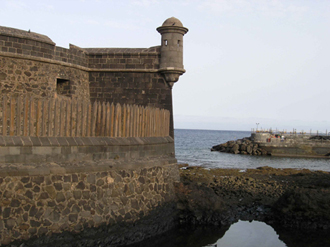
The Canary Islands have always been present in myth and legend, like those mythical lands beyond the Pillars of Hercules in the Strait of Gibraltar, the gateway to the Mare Tenebrosum. Classical writers have placed Paradise, the Elysian Fields and the Garden of the Hesperides here, although one of the first reliable accounts of the islands we owe to Pliny the Elder, in the 1st century AD.
When the Spanish conquistadors arrived in Tenerife, the island was divided into nine small kingdoms, or menceyatos: Taoro, Abona, Güímar, Anaga, Tegueste, Tacoronte, Icod, Daute and Adeje, with a king, or mencey, in charge of each, advised by his council of elders, or tagoror. The Guanches, the pre-colonial inhabitants of Tenerife, wore animal skins and, as far as the documented evidence goes, had not dominated the art of navigation. However, they did have elaborate burial rites for their dead, with mummification techniques that proved very effective in some cases.
The conquest of the archipelago officially began in 1402, with Jean de Béthencourt and Gadifer de la Salle, in the name of Henry III, taking Lanzarote, Fuerteventura and El Hierro. Tenerife was the last island to be conquered, and did not fall until the reign of the Catholic Monarchs. The fight was bloody and the Spanish, led by the Adelantado Alonso Fernández de Lugo, suffered some spectacular defeats, such as that of La Matanza, in 1494. A year later, the Adelantado returned with a new army and the invaders' luck on the battlefield changed at La Victoria.
Tenerife has always been close to America, being an obligatory stopover for ships travelling to the New World. The people of the Canary Islands have played an active role, as colonists, in the birth of new cities and nations. It was island families, for example, who founded the cities of Montevideo and San Antonio, Texas, and the list of those defending the Alamo features many obviously Canarian surnames. Venezuela and Cuba were the traditional destinations for emigrants from Tenerife.
The discovery of America and the sea traffic from Europe into the Indian Ocean via the western coast of Africa made the Canary Islands a crossroads for sea routes, and its new-found wealth made it a target for pirates and privateers for centuries. In 1797, Admiral Nelson tried to capture Santa Cruz de Tenerife from the sea. He was defeated by General Gutiérrez and lost an arm in the battle.
Owing to their geographical location, Tenerife and the other Canary Islands have always maintained certain economic and administrative peculiarities compared to the rest of Spain. These differences were set down in the Law of Free Ports at the end of the 19th century (1872); and recognised in the creation of the Island Councils, similar to a sort of government for each island (1912), and the Canary Islands Economic and Fiscal Regime (REF) Law of 1991.
In 1982, the Canary Islands became an Autonomous Region and in 1986 the islands were integrated into the European Union, along with the rest of Spain. Today, the archipelago's position in Europe is defined as an outermost region in the Maastricht Treaty (1992) and the Amsterdam Treaty (1997) and is recognised by the project for a European Constitution, in the Lisbon Treaty (2004), and the Outermost Regions Statute.
Each town and region of Tenerife has traditions dating back hundreds of years, which the local people are careful to maintain and preserve. These traditions are connected to agriculture, to the sea and fishing, and to the special bond that exists on the island between the inhabitants and the land they live in, with all of its special characteristics. If you would like more information about our Popular Parties, please visit Fiestas de Tenerife).


 Print
Print